I often get asked if spiralizers — tools that transform vegetables into noodle shapes — are worth buying. While they’re a great way to make a low-carb, high-vegetable pasta alternative, you don’t need a spiralizer. Here are two vegetable noodle techniques that don’t need any special equipment.
First, a disclosure: I don’t currently own a vegetable spiralizer, but have been debating buying one for a while now. I didn’t want to take a leap of faith and spend money a tool I wasn’t sure I’d regularly use — and more importantly, that would take up more counter space. (The Paderno, which measures about a foot long by six inches wide, takes up significant kitchen real estate.) So in the meantime, while I mull over my decision, I’ve been experimenting with versions of vegetable noodles that don’t require special equipment.
The good news is that it’s possible to enjoy tasty vegetable noodles without a spiralizer, julienne peeler, or any other special equipment. These two knife techniques do take more knife skills and effort than a spiralizer would, but they also allow you to test out the idea of eating vegetable noodles without having to invest money and space on another machine first.
Technique #1: Shaving Ribbons
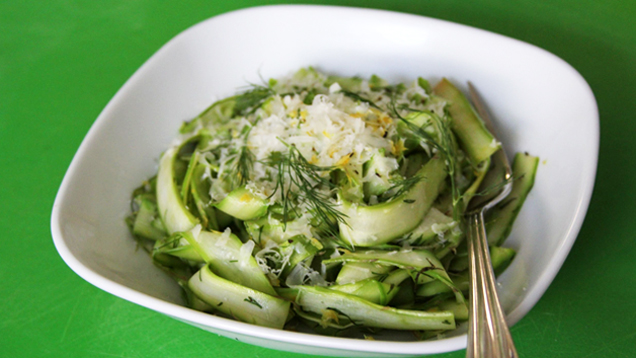
Shaving vegetables like asparagus into long, thin ribbons is one of the easiest ways to enjoy noodles without a spiralizer. Watch this handy video for a thorough overview, then set aside a few extra asparagus stalks to get the technique down.
Once you’ve created asparagus ribbons, you can either dressing it as you would a light salad, or you can cook it by sautéing it very briefly in a flavorful oil, then garnishing it as you would a traditional pasta, like I did with a version of asparagus “pasta” tossed with lemon, dill and parmesan.
The operative words are very briefly, because below is what happens when you sauté thin shavings of a high-moisture vegetable for even 30 seconds too long. Thirty seconds can mean the difference between the above and the sad state of affairs below.
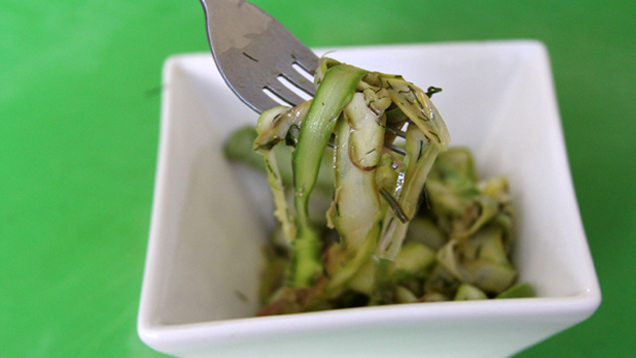
With asparagus, carrots or any other high-moisture vegetables you treat as a noodle, you may need to pat it dry before you sauté or season it. This helps prevent the vegetable ribbons from becoming too limp and wet.
Technique #2: Julienning Vegetables
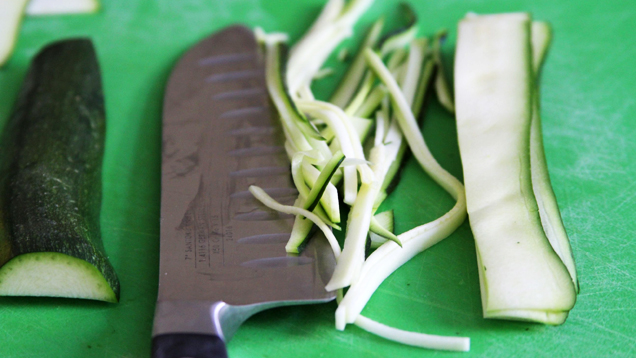
The technique of julienning a vegetable, or cutting it into long, thin, matchstick-like strips, can be applied to any long vegetable, from zucchini to cucumbers and capsicums.
To create zucchini linguine, I first cut thin slices of zucchini on a mandoline. After that, I stacked those slices and cut them into thin strips. Many mandolines even come with a julienne attachment, allowing you to skip that second step. If you don’t own a spiralizer, julienne peeler, or mandoline, fear not: you can still create zucchini linguine by doing the work by hand. It’s definitely more labour-intensive, but it’s possible if you have precise knife skills; just be sure to slice the zucchini very thinly so you’re accurately mimicking the thickness of a noodle.
I served my zucchini noodles raw and tossed them with meyer lemon, almond, and basil pesto, an adaptation of this recipe for zucchini linguine. I finished the “zoodles” off with parmesan shavings and more nuts tossed in alongside. You could also blanch the zoodles for a minute before serving them, just like you would pasta.
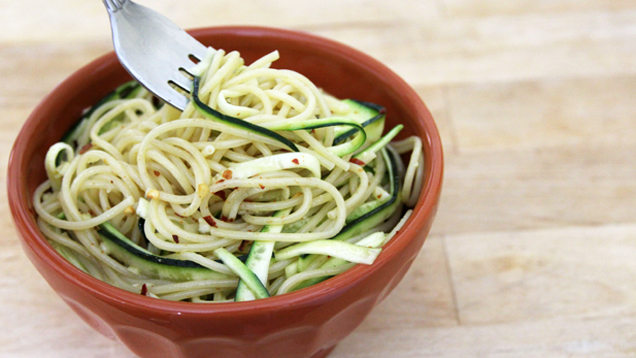
Not everyone is ready to cut pasta out cold turkey. I’m certainly not. For those times when you need some of that authentic bite but want to cut down on your carbs and get your daily dose of vegetables, I recommend a pasta-vegetable mix. One of my favourites is spaghetti aglio e olio (just spaghetti, garlic, red pepper flakes, and olive oil) made lighter with the addition of zucchini noodles.
There’s no denying a spiralizer can offer benefits that the above techniques can’t; it allows you to work with vegetables of many shapes and sizes. But until you’re sure you want to purchase one, you can get your vegetable noodle fix in this way.
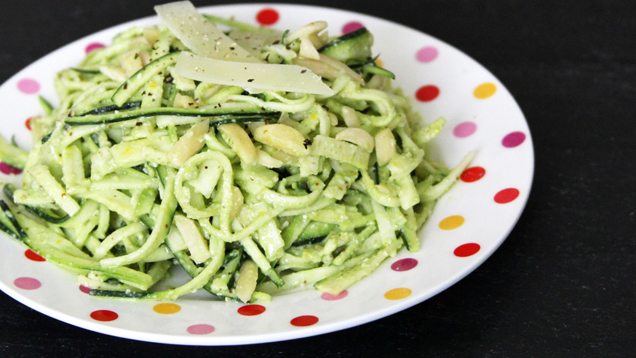
Comments